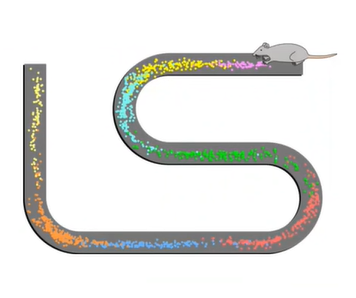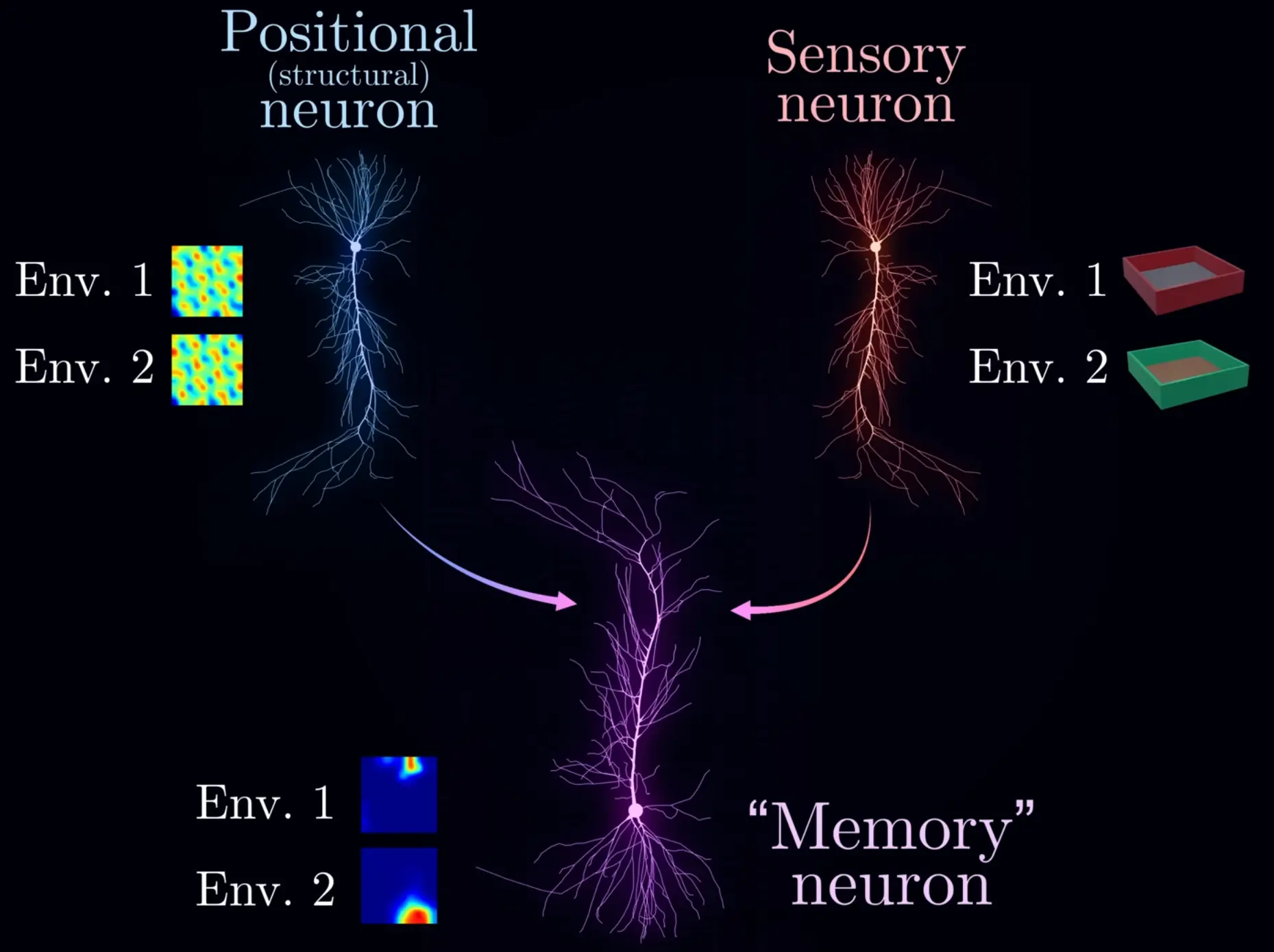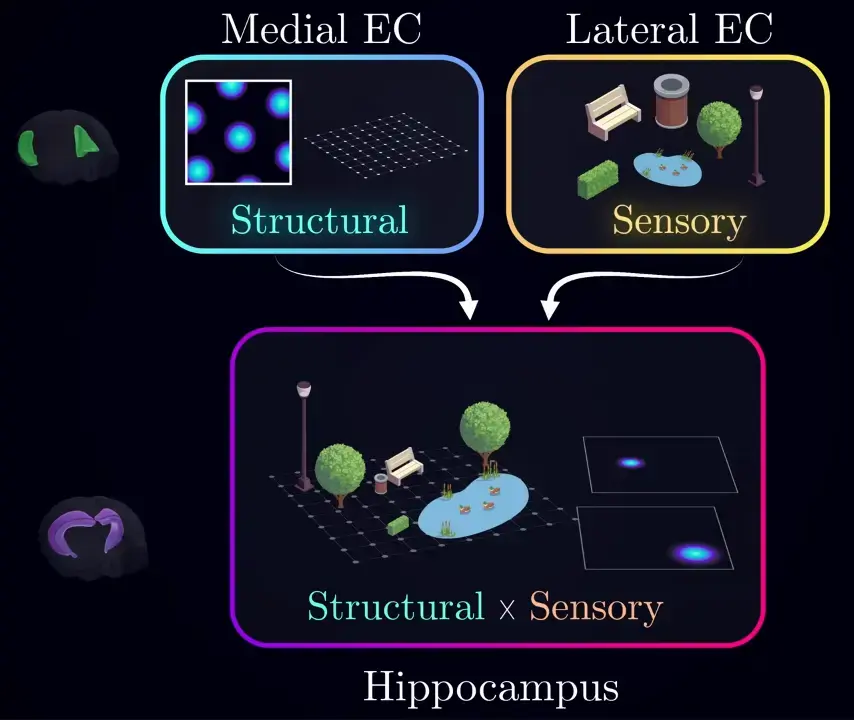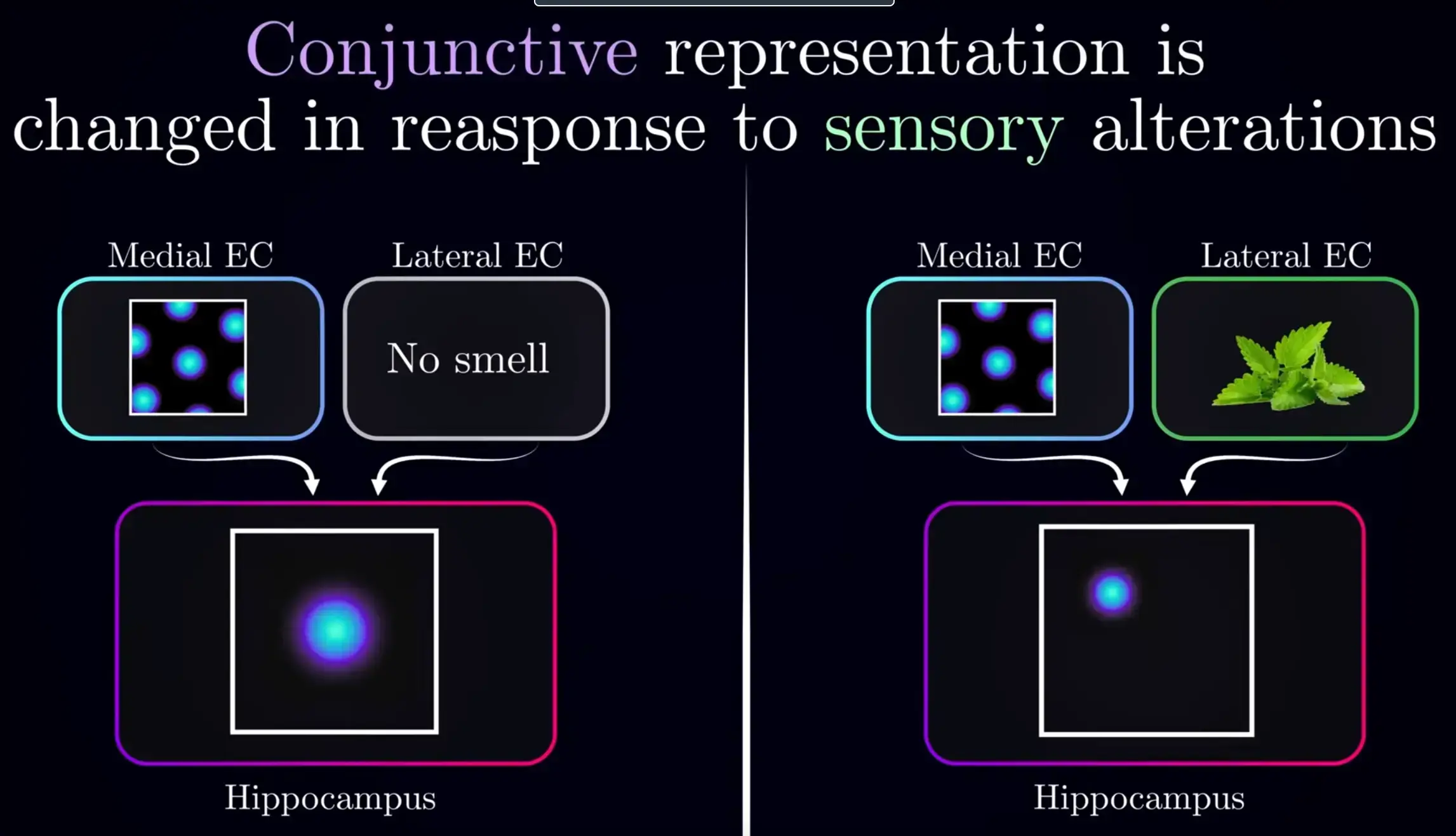
Place cells, a specialized form / arrangement of grid cells, constitute a positioning system in the brain.
Nearby cells can represent far away actual places.
They are pyramidial neurons, found for example in the hippocampus.
Place cells are context-dependent.
Place cells become active when an animal is in a specific location, in a context-dependent way: The response of a single cell is totally different in different surroundings.
Place cell is a bit of a misnomer, as they can also map concepts in a non-spatial dimension.
Transclude of firing-field#^abd93f
The firing of place cells is partially controlled by grid cells, which provide structural info.
Link to originalhippocampal remapping
place cells have a tendency to change their firing patterns in different sensory contexts.
E.g. adding a mint scent to a room might change the firing pattern of a place cell, or stop it from firing in that environment alltogether.
Mathematically, the underlying process is factorization. Structural path integration is combined with sensory information to make sense of the environment.
Structural and sensory here can also be thought of as “where / how” and “what”, respectively. The hippocampus forms an association between the two.
“Whether the remapping is sudden or gradual depends on how the animal gets to different places.”
References
Grossbergian Neuroscience 12 - Grid Cells and Hippocampal Navigation
How Your Brain Organizes Information - Can We Build an Artificial Hippocampus - Artem Kirsanov
Place cells: How your brain creates maps of abstract spaces


